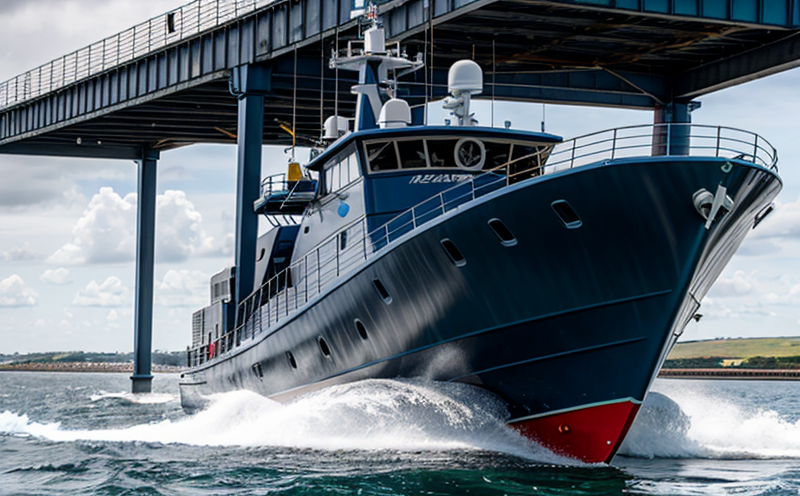ISO 15554 Engine Starting System Testing
The ISO 15554 standard is a critical guideline for testing engine starting systems, particularly in marine and ship equipment. This international standard ensures that the mechanical components of an engine’s starting system meet stringent performance criteria necessary to operate reliably under harsh maritime conditions.
Engine starting systems are pivotal for ensuring seamless vessel operations. They must function effectively in various environmental conditions ranging from hot and dry climates to cold, humid environments. The ISO 15554 standard addresses these challenges by providing a framework that covers all aspects of the testing process, including specimen preparation, apparatus requirements, acceptance criteria, and reporting.
The test procedure outlined in ISO 15554 is designed to simulate real-world conditions as closely as possible. This includes replicating ambient temperatures, humidity levels, and other environmental factors that could affect the performance of a starting system. The testing process typically involves placing the engine under controlled stress conditions to assess its durability and reliability.
One of the key aspects of this test is the use of specialized equipment tailored for marine environments. This includes simulating different types of fuel, lubricants, and coolant fluids that are commonly used in ship engines. The apparatus must be capable of replicating these conditions accurately to ensure that the results obtained from testing are reliable and reflective of actual operational scenarios.
The acceptance criteria defined by ISO 15554 are stringent. They not only focus on mechanical performance but also on the overall efficiency and reliability of the starting system under various load conditions. The standard specifies permissible tolerances for wear, tear, and other forms of degradation that could impact the system's functionality over time.
Another critical component of ISO 15554 testing is the detailed reporting mechanism. This ensures that all relevant data collected during the test can be thoroughly analyzed and reviewed by quality managers, compliance officers, R&D engineers, and procurement teams. The comprehensive report provides insights into any potential issues or areas for improvement, which are essential for continuous product enhancement.
Understanding the nuances of ISO 15554 testing requires a deep dive into its procedural aspects. This includes familiarity with the specific apparatus used in the test, such as climate chambers that can replicate diverse environmental conditions and precision torque meters to measure starting effort accurately. The sector context is critical here, given the unique demands placed on marine engine components by harsh maritime environments.
The category-specific scope of ISO 15554 testing emphasizes the importance of mechanical integrity in a starting system. This includes evaluating the robustness of components like starters, batteries, and control circuits under challenging conditions. The acceptance criteria ensure that all parts perform consistently across various operational scenarios, enhancing overall vessel safety and efficiency.
The real-world application of ISO 15554 testing is extensive, covering everything from initial design validation to ongoing quality assurance in the manufacturing process. By adhering to this standard, manufacturers can build confidence in their products' reliability and durability, which is crucial for maintaining compliance with maritime regulations.
The test procedure itself involves multiple stages, each aimed at assessing different aspects of the starting system’s performance. For instance, one stage focuses on testing the starter motor's ability to engage under various load conditions, while another examines how effectively fuel injection systems respond to ignition signals in cold environments.
Benefits
The benefits of ISO 15554 testing extend beyond mere compliance with international standards. It ensures that marine engine starting systems perform optimally under a wide range of conditions, enhancing vessel safety and operational efficiency.
By adhering to this standard, manufacturers gain a competitive edge by demonstrating superior product quality. This not only fosters customer trust but also opens doors to new markets and regulatory approvals.
The detailed insights provided through ISO 15554 testing are invaluable for R&D teams. These insights can lead to innovative design improvements and process optimizations, ultimately contributing to cost savings and increased market share.
Compliance with this standard also simplifies the procurement process by ensuring that all suppliers meet stringent quality benchmarks. This reduces the risk of substandard components being used in critical systems.
Why Choose This Test
The choice to undergo ISO 15554 testing is driven by several compelling reasons. Primarily, it ensures that marine engine starting systems are reliable and efficient under the most challenging conditions. This reliability translates into enhanced vessel safety and operational efficiency.
Compliance with this standard also offers a competitive advantage in terms of quality assurance. It demonstrates a commitment to excellence, which is increasingly valued by both customers and regulatory bodies.
The test provides robust data for continuous improvement through detailed reporting and analysis. This not only aids in rectifying any issues but also facilitates the development of new products that meet ever-evolving standards.
Lastly, ISO 15554 testing simplifies the procurement process by ensuring that all suppliers adhere to high-quality benchmarks. This reduces supply chain risks and ensures the availability of reliable components for critical systems.
Use Cases and Application Examples
| Use Case | Description |
|---|---|
| Vessel Maintenance | Ensuring the reliability of starting systems during regular maintenance schedules. |
| New Product Development | Evaluating new designs and materials in a controlled environment. |
| Regulatory Compliance | Meeting international standards for maritime equipment. |
| Application Example | Description |
|---|---|
| Testing Starter Motors | Evaluating the performance of starter motors under various load conditions. |
| Battery Performance | Assessing battery capacity and efficiency in cold ambient temperatures. |





